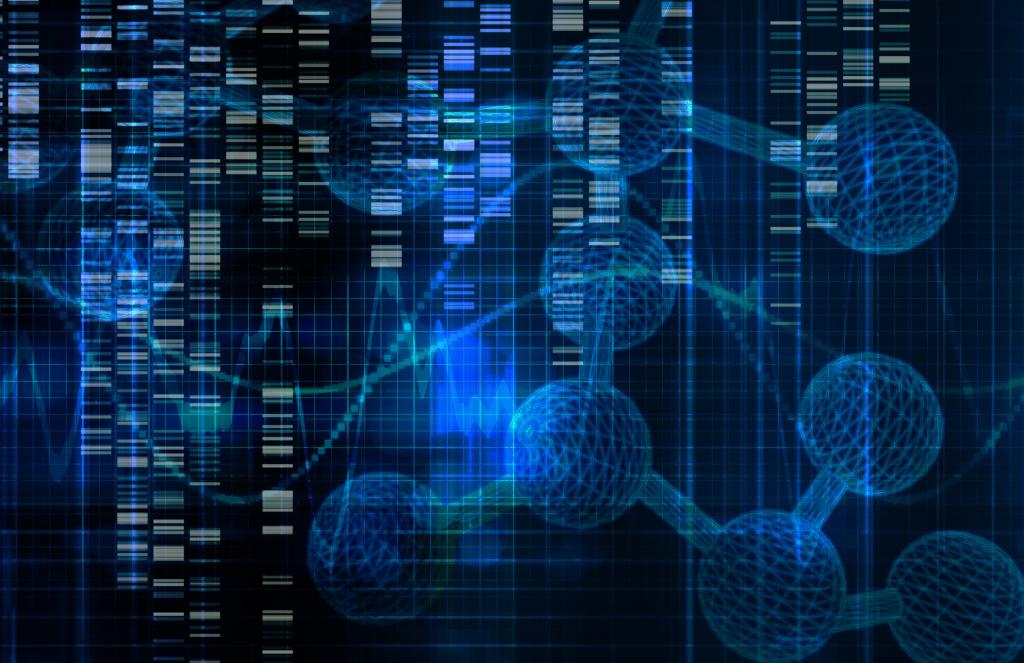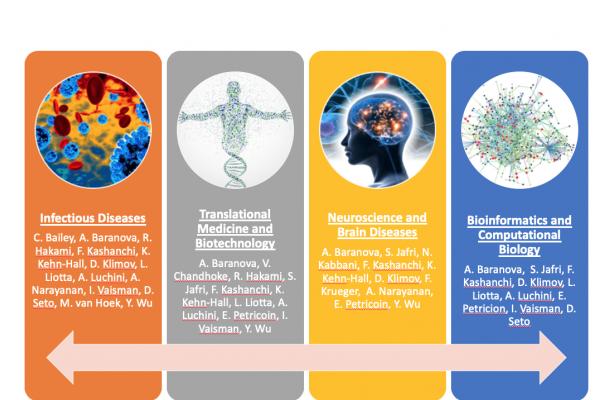Research and Centers
Admission CTAs
Main navigation
Section Navigation: School of Systems Biology
Research Interests
Cell and Molecular Biology
Ancha Baranova, Professor — Systems biology and functional genomics of chronic human diseases including cancer, diabetes, obesity, liver disorders, computational biology and pathway analysis. Google Scholar Page
Vikas Chandholke, Professor – Translational research of Liver Diseases and Metabolic Syndrome. Google Scholar Page
Karl Fryxell, Associate Professor — Molecular evolution, computational biology and genetic pathways, functional genomics of the nervous system including cognition and nicotine addiction. Google Scholar Page
Saleet Jafri, Professor — Using computational modeling to study the molecular and cellular basis of disease. Interests include mitochondrial physiology, cardiac physiology and disease, muscle and muscle pathologies, and t-lymphocyte signaling. Google Scholar Page
Nadine Kabbani, Associate Professor — Neuroscience research focusing on the cellular and molecular mechanisms of nicotinic receptor drug actions in the brain and immune system, to include identifying and characterizing protein interaction networks for the dopamine and nicotinic acetylcholine. Google Scholar Page
Lance Liotta, Professor — Cancer research to include the process of tumor invasion and metastasis at the molecular level; technologies used to make broad discoveries in genomics, functional genomics and tissue proteomics. Google Scholar Page
Alessandra Luchini, Associate Professor — Studies hydrogel nanoparticles and their application in proteomics translational research. Google Scholar Page
Emanuel Petricoin III, Professor — Implementation of proteomics, nanotechnology and genomics research in cancer, metabolic syndrome, cardiopulmonary diseases and neurodegenerative and liver diseases. Google Scholar Page
Mariaelena Pierobon, Associate Professor - The delivery and implementation of precision medicine for cancer patients. Google Scholar Page
Don Seto, Professor — Adenoviruses are used as a model system to apply genomics and bioinformatics approaches for understanding viruses, particularly pathogens, and for changing paradigms. Google Scholar Page
Microbiology and Infectious Diseases
Ramin Hakami, Associate Professor – Vesicular regulation of innate immune response to highly pathogenic agents, including regulatory mechanisms of intercellular vesicle (exosome) trafficking. Google Scholar Page
Fatah Kashanchi, Professor — Gene expression, genomics and proteomics of HIV-1 and HTLV-1 infected cells. Google Scholar Page
Aarthi Narayanan Iyer, Associate Professor — Pathogen interactions involving Bunyaviruses, Alphaviruses and Human retroviruses; Roles of extracellular vesicles intercellular communication Google Scholar Page
Monique van Hoek, Associate Director of Research, Professor— Bacterial physiology of Francisella tularensis, including biofilm, small molecule communication and quorum sensing. Development of novel antimicrobial and antibiofilm agents, including antimicrobial peptides. Google Scholar Page
Yuntao Wu, Professor— HIV-1 infection of blood resting CD4 T cells and macrophages; role of cell signaling in HIV-1 infection and pathogenesis; HIV-1 preintegration transcription; lentiviral vector development for targeting HIV resevoirs. Google Scholar Page
Bioinformatics and Computational Biology
Ancha Baranova, Professor – Systems biology and functional genomics of chronic human diseases including cancer, diabetes, obesity, liver disorders, computational biology and pathway analysis. Google Scholar Page
Saleet Jafri, Professor — Using computational modeling to study the molecular and cellular basis of disease. Interests include mitochondrial physiology, cardiac physiology and disease, muscle and muscle pathologies, and t-lymphocyte signaling. Google Scholar Page
Dmitri Klimov, Professor — Using computer simulations to investigate the assembly of peptides into ordered nanostructures, such as amyloid fibrils. Research has implications for neurodegenerative diseases, including Alzheimer’s disease. Google Scholar Page
Frank Krueger, Associate Professor. Chief of the Social Cognition and Interaction: Functional Imaging (SCI:FI) Lab, combining methods from social psychology, experimental economics, and cognitive neuroscience. Google Scholar Page
Christopher Lockhart, Research Assistant Professor – Using computational methods including simulations and machine learning to investigate medically-relevant biomolecular systems. Google Scholar Page
Don Seto, Professor— Adenoviruses are used as a model system to apply genomics and bioinformatics approaches for understanding viruses, particularly pathogens, and for changing paradigms. Google Scholar Page
Jeffrey Solka, Adjunct Assistant Professor— Statistical pattern recognition and data mining. Particiularly dimensionality reduction and text data mining. Google Scholar Page
Aman Ullah, Assistant Professor – Cardiac Calcium Dynamics. Modulation of α7Nicotinic Receptor Intracellular Calcium. Calcium Signaling in Neurodegenerative Diseases. Google Scholar Page
Iosif Vaisman, Director, Professor— Developing computational methods for protein structure and function analysis. Computational geometry or protein structure and structure-function relationships. Google Scholar Page
Retired Faculty
Charles L. Bailey, Distinguished Professor — Biodefense, Biology and ecology of vector-borne infectious diseases. Google Scholar Page

